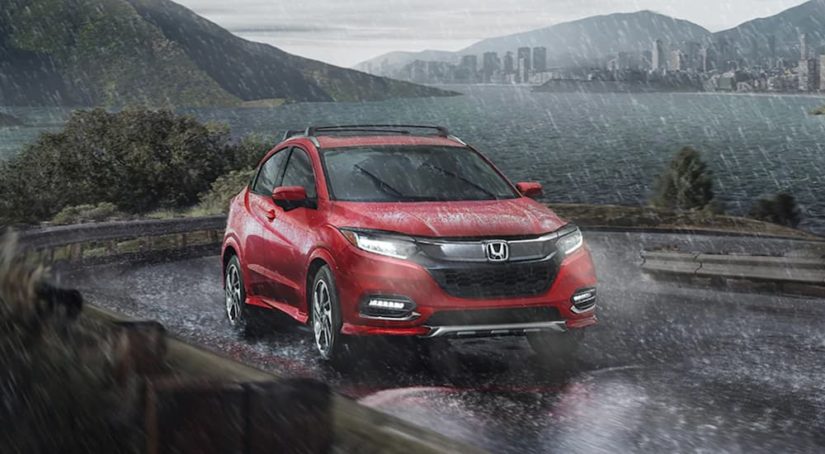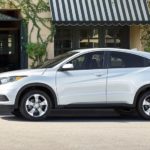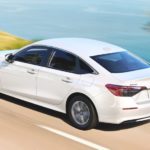Nobody likes choosing a favorite. A favorite song, food, or even a favorite child; choosing a favorite anything locks you out of every other option because, in theory, you can only have one true favorite. Sometimes, it’s an impossible task. For example, I can’t help but appreciate each SUV Honda releases, and this is for one reason: Honda SUVs are among the best in the market, but which one should you buy? If you’re in the market to buy a used vehicle and have been visiting your local used car dealers, consider adding Honda SUVs to your list. Not entirely convinced? Let’s take a deeper look at a few notable Honda SUVs and allow me to demonstrate the benefits of each model.
There are five Honda SUVs I’d like you to consider, starting with the HR-V—the most accessible SUV in the lineup. The 2016 Honda HR-V was the first model year of its kind to release in North America, but I’ll discuss why this is important shortly. Secondly, I’ll discuss the CR-V and CR-V Hybrid, and lastly, we’ll discuss the Pilot and Passport. The Passport, like the HR-V, hasn’t been available for long, but the Pilot has been actively available for over two decades. With so many choices, it’s understandable if you’re a tad intimidated or want to know more. Let’s begin the rundown on which Honda SUV you should consider if you’re planning on purchasing a used vehicle.
The 2019 Honda HR-V
As I mentioned, the Honda HR-V first entered the market with the 2016 model, meaning you won’t have too many model years to shop between, at least compared to other Honda vehicles that have been available for longer, like the Pilot. An advantage to this is similar features to later models, most notably in performance. The 2016 HR-V performs as the 2022 model does, so if you want to save money on an HR-V and are worried about losing out in this area, don’t worry. HR-V models released between 2016 and 2022 come with a 1.8L four-cylinder engine paired with a Continuously Variable Automatic Transmission (CVT.)
Besides the 2023 HR-V, which changed up the powertrain for the first time, you can expect your pre-owned HR-V will likely output 141 hp and 127 lb-ft of torque. The 2019 HR-V has an EPA-estimated rating of 28 MPG in the city and 34 MPG on the highway with FWD, while AWD models get 27 MPG in the city and 31 MPG on the highway, and you can expect other model years to perform identically here too.
From a price-to-size standpoint, the HR-V is the most cost-effective Honda vehicle to give you the cargo space you’d expect from an SUV. HR-V models released before 2023 offer drivers a maximum cargo volume of 58.8 cu.ft. with the backseats folded down and 24.3 cu.ft. with the seats folded up. However, if you want a feature-packed HR-V, the refreshed 2019 model is a great place to start, as that’s when more modern features appeared, such as Apple CarPlay and Android Auto, in addition to the available Honda Sensing suite of driver assist features.
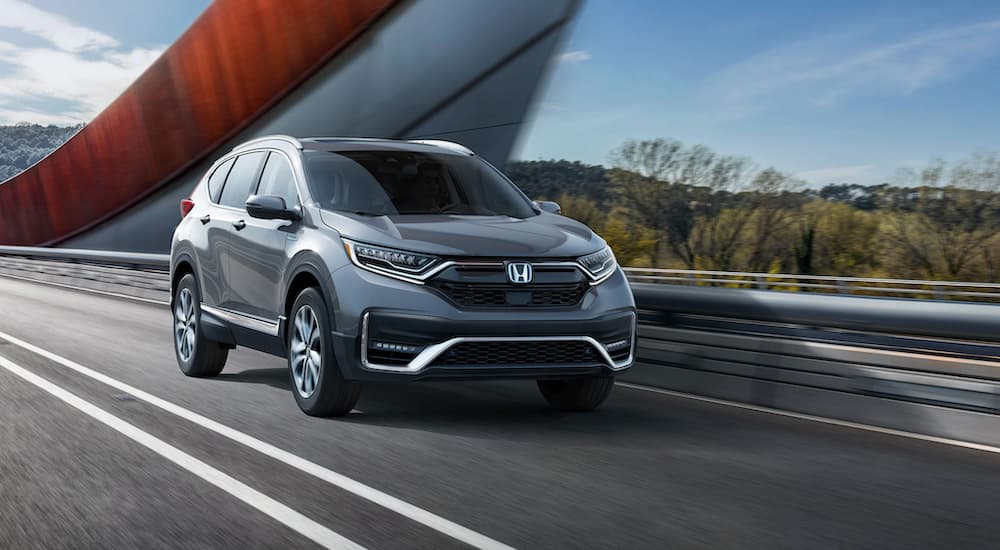
The 2020 Honda CR-V and 2020 CR-V Hybrid
The Honda CR-V is a popular compact SUV dating back to the mid-1990s and is an easy recommendation because of its price, performance, safety features, and more. On the used market, there’s no shortage of CR-V models to shop from, but models released in 2017 and beyond should be at the top of your list for the Honda Sensing safety suite coming standard. The 2017 CR-V also introduced the turbocharged 1.5L four-cylinder engine, which became a staple for the SUV. The turbocharged 1.5L four-cylinder engine produces 190 hp and 179 lb-ft of torque with impressive EPA-estimated ratings of 28 MPG in the city and 34 MPG on the highway.
The CR-V Hybrid, as the name suggests, is the CR-V with a hybrid powertrain, which launched alongside the 2020 model and since then has utilized a 2.0L four-cylinder engine with electrified motors to create 212 hp and 232 lb-ft of torque. It’s impressive to consider the hybrid variant outperforms the standard CR-V, but this is to be expected with a larger engine, regardless if it isn’t turbocharged. However, the CR-V Hybrid’s main draw is its fuel efficiency, which achieves an outstanding EPA-estimated rating of 40 MPG in the city and 35 MPG on the highway. The other difference is the size of the vehicle, which might be a dealbreaker if cargo space is a priority. For example, the 2020 CR-V Hybrid offers a maximum of 68.7 cu.ft. of space against the regular CR-V’s 75.8 cu.ft. of space. Those considering the hybrid model would essentially be sacrificing some space in exchange for saving at the pump, which is not that bad of a trade-off.
The 2020 Honda Pilot and 2020 Honda Passport
The simple distinction between the Honda Pilot and Passport is passenger capacity. Specifically, the Passport offers two rows of seating, while the Pilot offers three, along with more cargo space. The most significant difference separating these two SUVs is age: the Pilot was launched in the early 2000s, and the Passport in the late 2010s. However, the Passport was designed with the Pilot in mind and is a similar vehicle in many ways. For example, the 2020 Pilot and Passport utilize a 3.5L V6 engine that produces 280 hp and 262 lb-ft of torque. The performance achieved by the V6 engine means the Passport and Pilot are the most capable SUVs in Honda’s lineup and the largest by no small coincidence. The 2020 Pilot comes standard with a six-speed automatic transmission, but there’s an optional nine-speed automatic transmission option as well. As it moved forward, the Pilot removed the six-speed automatic transmission and made the nine-speed standard, like the Passport.
As I mentioned, the Pilot and Passport are Honda’s two largest SUVs, but the Pilot is larger than the Passport, albeit not by much. The Pilot has the third row of seating, which the Passport doesn’t, so what does this mean for cargo space? Using a 2020 Passport and Pilot as examples: the Pilot offers a maximum of 109 cu.ft. of space, whereas the Passport caps out at 100.8 cu.ft. of space. The Passport’s cargo space is highly respectable, but it’s still less than the Pilot. However, when the rear row of seats are upright in the Passport, it still offers an excellent 50.5 cu.ft. of space. In the same configuration for the Pilot, which would mean folding down the third row of seats, the Pilot gives you 55.9 cu.ft. of space.
The purchase between a Honda Passport and Pilot should come down to your need for a third row. The Passport and Pilot are often around a similar price, which translates to the pre-owned market. If you’re driving with more than three passengers, perhaps more often than not, you should consider the Pilot. The Pilot also has the benefit of more cargo space, as I mentioned earlier, and aside from being a larger vehicle, fuel efficiency is relatively unaffected for the most part.
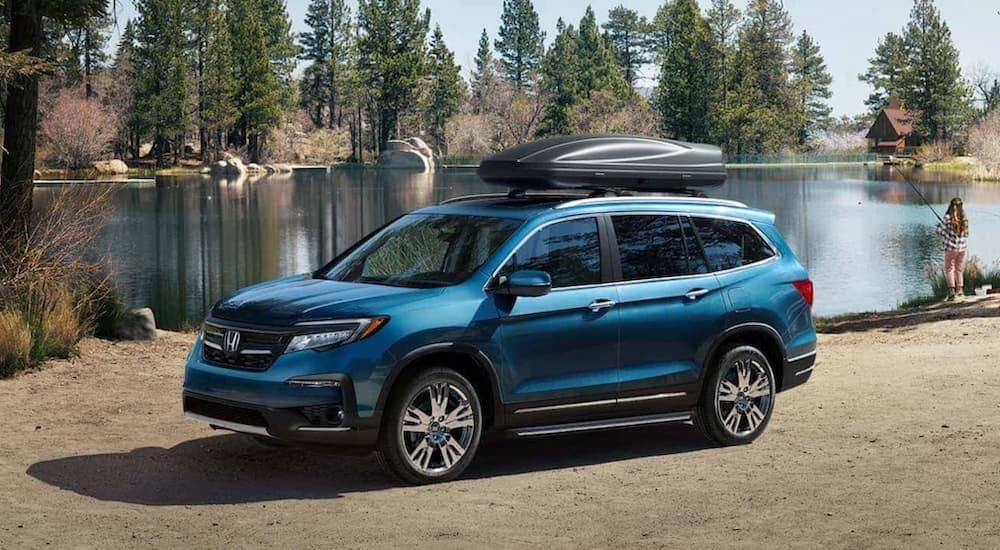
Honda Has the Dependability You’re Looking For in a Used SUV
As you can see, Honda offers a vast array of SUV options for consumers, and when choosing to shop used, these options expand even more. No matter what features are on the top of your must-have list, there’s a Honda SUV for you. Whether you typically drive solo and are looking for a fuel-efficient commuter or something larger to fit the whole family, there is an abundance of options available to you in the used market. As shown in the models mentioned above, it is best to search within the last couple of model years to make sure you can take advantage of modern tech such as the Honda Sensing suite. Whichever Honda you choose, it’s sure to provide the power and reliability you’re looking for in an SUV for many years to come.
